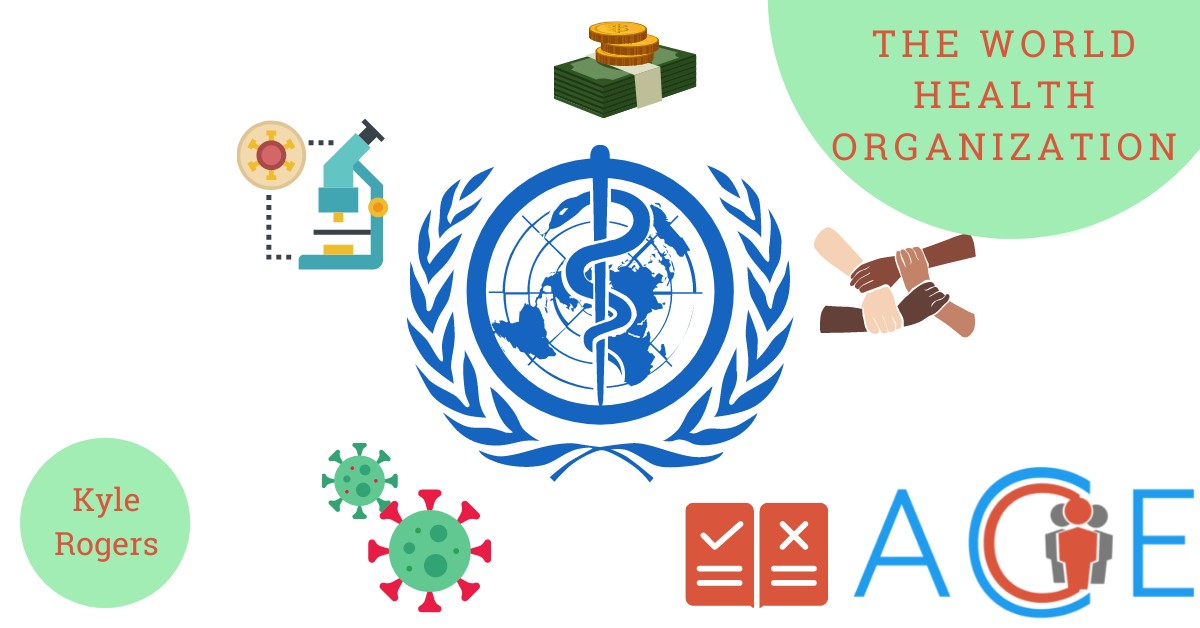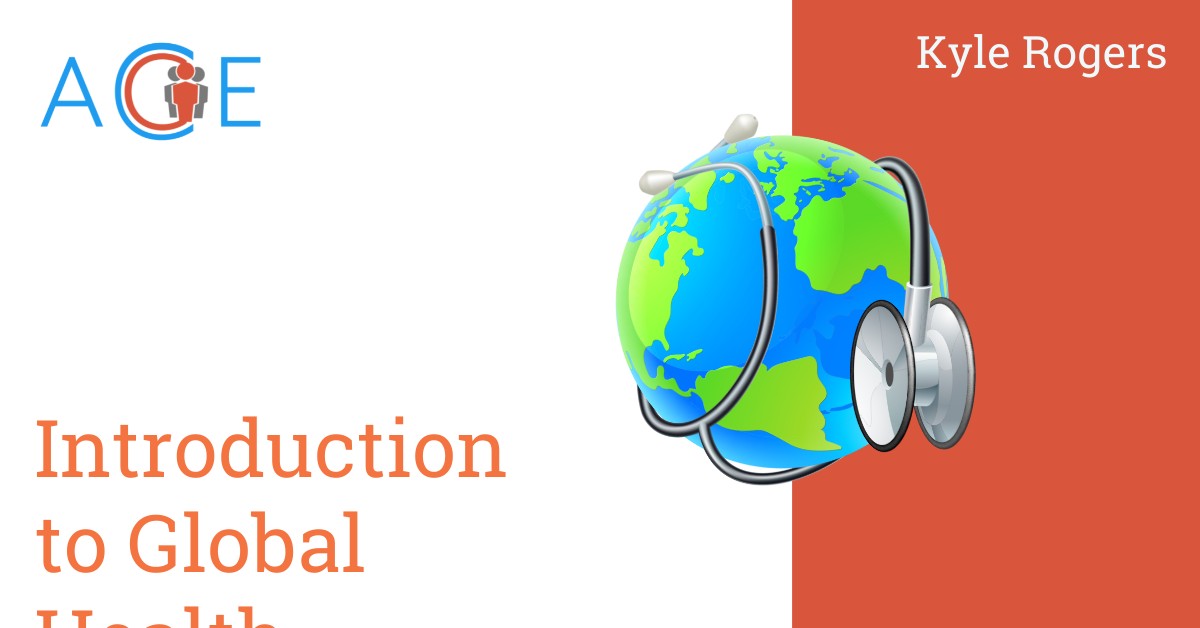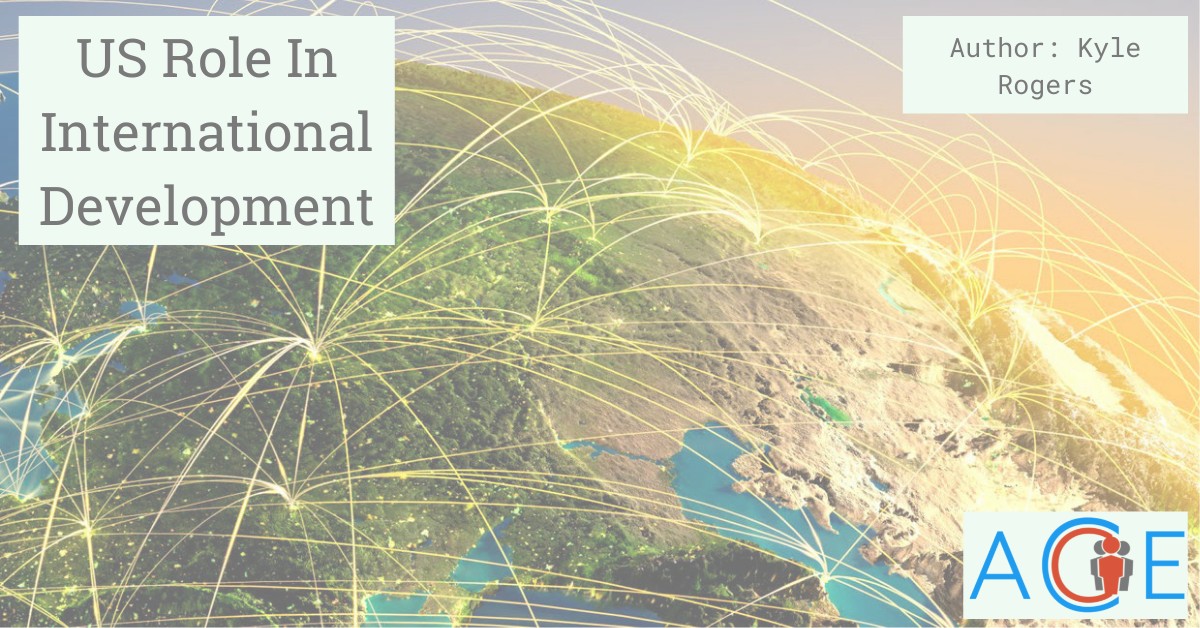The World Health Organization (WHO) was founded in 1948 as a UN specialized agency to direct and coordinate international health policy within the UN System with the goal of improving global health outcomes. The WHO would be created with the backing of 61 countries, including the United States, giving it legitimacy to steer the global health conversation as a major international actor. The WHO Constitution defines health as, “a state of complete physical, mental and social well-being and not merely the absence of disease or infirmity.” This definition expanded the concept of health to include not just medical interventions, but also the social determinants of health and healthcare access. Despite this robust definition of health, the WHO initially prioritized communicable disease, women and children’s health, nutrition, and sanitation as opposed to healthcare access or addressing the social structures impacting health. Over time, these facets of health would be more directly addressed by the agency.
The WHO is headquartered in Geneva, Switzerland and has six regional and 149 country offices throughout the world. Delegates from the 194 member states compose the World Health Assembly, which sets WHO policy, approves and monitors budgets, and elects a director-general as a leader of the WHO for 5-year terms. Tedros Adhanom Ghebreyesus is the current director-general of the WHO after being elected to his first 5-year term in 2017. He is the first African in the organization’s history to occupy the post. The WHO is governed by the member states and must respect their sovereignty. Therefore, it cannot enter a country without their permission and a country does not have to follow the agency’s recommendations. The WHO also maintains an Executive Board that is comprised of 34 members who have technical qualifications in the field of health. They provide proposals, make recommendations to the director-general, and implement the agency’s work plan.
The WHO rarely provides direct medical interventions or direct funding to implementors, but rather focuses on administrative, logistical, and advisory support for countries and other organizations. Core functions of the organization include partnership development, conducting research, setting global health morns, providing technical support, disease monitoring, and advocacy for global health initiatives. For example, guidelines regarding essential medicines, diagnostics, and medical practices are published by the WHO for countries to follow although they are not obliged to follow them. In addition, the WHO supports initiatives to control epidemic and endemic disease by promoting vaccination programs, the use of antibiotics and insecticides, the improvement of clinical facilities for early diagnosis and prevention, access to clean water and sanitation systems, and health education for rural communities. The final major function the agency has, is the ability to declare a Public Emergency of International Concern or a Pandemic. This function allows the WHO to draw attention to, and rally global resources against, emerging health threats or trends in an effort to address them.
The WHO can direct the global health discussion through its World Health Report and other tools to influence global actions as well. This can be seen in its 2019 General Programme of Work, where the WHO identified three priorities it seeks to address in the coming years:
- Providing health coverage to one billion more people
- Protecting one billion more people from health emergencies such as epidemics; and
- Ensuring another one billion people enjoy better health and well-being, including protection from non-infectious diseases such as cancer.
Since at least half of the world’s population does not currently have full coverage of essential health services, publishing this document allows the WHO to highlight a global health challenge and set a goal for the countries of the world to strive for.
The WHO is funded through a combination of assessed contributions, which are calculated based on each member countries’ wealth and population, and voluntary contributions which are provided at the discretion of governments and private donors. Approximately 17 percent of the WHO’s budget comes from assessed contributions, with the rest coming from voluntary contributions. This has increasingly made the WHO dependent on voluntary contributions and placed pressure on the organization to align with the goals of their donors. This was seen in 2020 with President Trump’s plans to withdraw completely from the WHO and take U.S. funding with it due to his belief that the WHO was too deferential to China. Non-government donors also impact the WHO’s direction as seen when private donors make voluntary contributions with the understanding that the donors’ preferred projects will be addressed. One example includes the donations given to the WHO by the Bill & Melinda Gates Foundation. The Bill & Melinda Gates Foundation has prioritized the eradication of polio and the increased resources allocated to this cause by the WHO reflect the foundation’s priority. This has presented a growing challenge to the WHO as monetary contributions are increasingly becoming inflexible through donor restrictions. 93 percent of funds given to the WHO for its health programs is now earmarked and cannot be distributed to other projects that may have a greater need.
The WHO has accomplished remarkable feats through its global leadership and coordination during multiple outbreaks, vaccination campaigns, and other global health initiatives. What many point to as the agency’s greatest achievement began in 1967 when the WHO started a smallpox vaccination campaign. By 1980, smallpox was eradicated due to the coordination and determination of the WHO’s staff and leadership. Similarly, the WHO’s role in the polio vaccination campaign has been highly lauded, with polio currently on the verge of eradication. The WHO’s handling of the SARS (severe acute respiratory syndrome) outbreak in 2003 was widely praised for the agency’s quick medical and travel guidance. The WHO’s decisive action and travel recommendations were crucial to the successful containment of what many feared could be a global health disaster. The impact of the outbreak was contained mostly to Asia and the death toll was quite low.
Conversely, the most common criticism of the WHO comes in the form of mismanaged and slow responses due to poor coordination or political considerations. Political friction between WHO headquarters and the regional offices has been a hindrance to the agency’s efficiency, as many believe the regional offices have too much autonomy which leads to a lack of internal cooperation. During the 2014 Ebola outbreak, the WHO was criticized for waiting 5 months to declare a public health emergency despite the pleas of many organization such as Doctors Without Borders. More recently, many criticized the WHO’s response to COVID-19 as being too deferential to China. In particular, the Trump Administration believed the WHO accepted misinformation from China at face value due to the country’s political power within the agency. In general, critics believe the WHO should have been more forceful in its requests for accurate information at the start of the pandemic.
The United States has played an outsized role in the WHO from its inception due to its monetary contributions and international political clout. The United States’ support for the creation of the United Nations (UN) following World War II was integral to the creation of the WHO as a UN specialized agency. Ever since the agency’s establishment, the United States has traditionally been the largest donor to the WHO. In 2019, the U.S. provided a of total $419 million through assessed and voluntary contributions of the WHO’s $5.624 billion budget. Additionally, The U.S. has been an active participant in WHO governance and provided technical support for health initiatives. This is seen in the country’s representation on the Executive Board along with U.S. government experts and resources being provided for research, laboratory work, and international outbreak response teams.
As it relates to the current COVID-19 pandemic, the WHO responded with its coordination, technical support, and advisory expertise. On December 31st, 2019, China reported a cluster of unknown pneumonia cases to the WHO. One month later, before any deaths were reported outside of China but a sharp increase in cases was seen outside of the country, the WHO declared a Public Emergency of International Concern. By March of 2020, the agency declared it a Pandemic as cases spread around the world. Additionally, the WHO provided critical supplies such as diagnostic tests and personal protective equipment to member states and created online courses to train health care workers in diagnosis and treatment methods for COVID-19. Furthermore, the WHO is providing medical and technical guidance to countries as they continue to investigate the virus and its new variants. The agency has sent more than 70 teams of technical advisors to assist countries with their COVID-19 responses.



